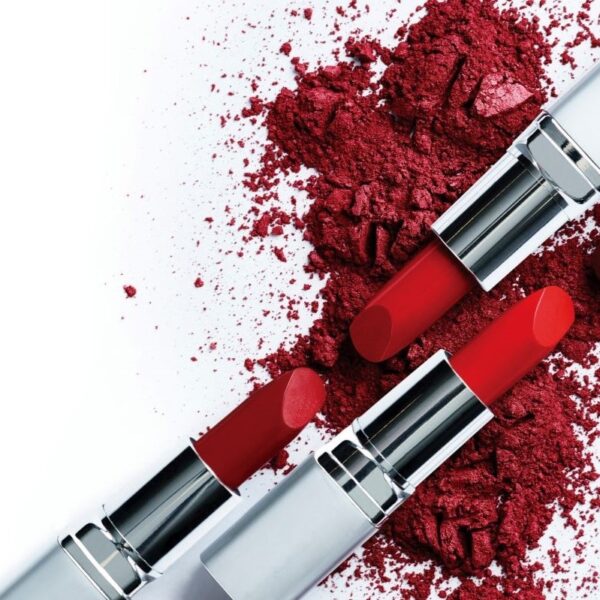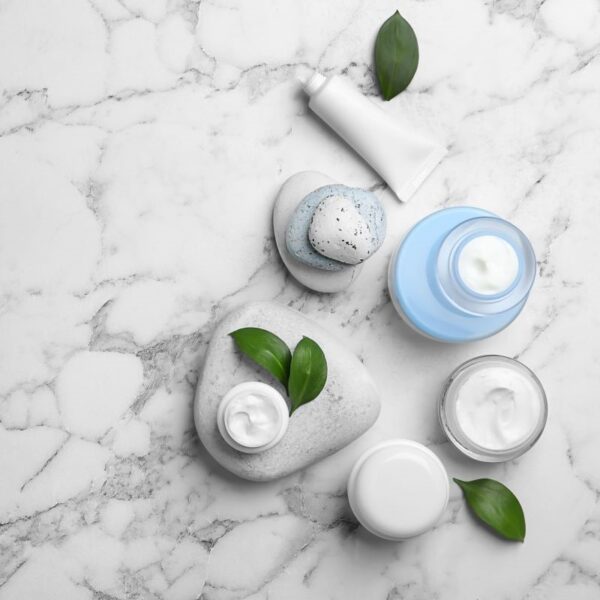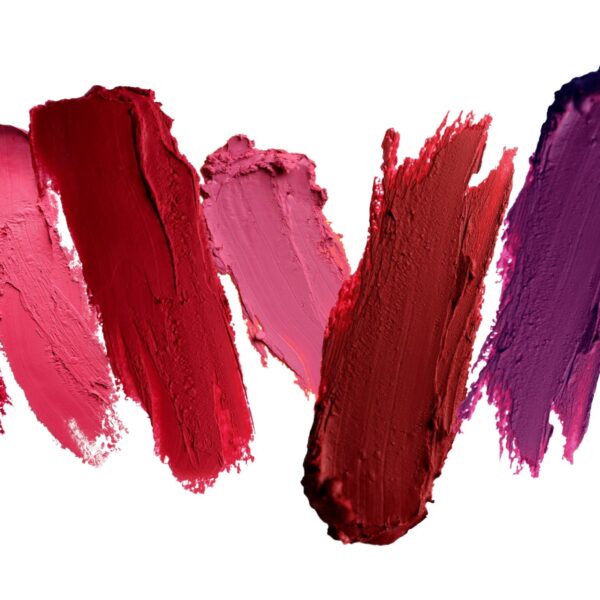Niacinamide, a form of vitamin B3, is essential to the human body. It helps build proteins for healthier skin and protects and repairs the skin from environmental damage, making it ideal for use as part of a regular skincare routine.
What is Niacinamide?
Niacinamide (also called nicotinamide) is a water-soluble vitamin. The structure of nicotinamide consists of a pyridine ring to which a primary amide group is attached in the meta position. It is an amide of nicotinic acid. Niacinamide is commonly used in skincare and personal care products for its many benefits to skin health. It’s also found in various foods and is used as a dietary supplement and in medication to treat pellagra caused by niacin deficiency.
Source: Wikipedia
Use of Niacinamide in Skincare and Personal Care Products
Niacinamide offers several benefits in skincare and personal care products, including improving skin tone, softening fine lines and wrinkles, minimizing enlarged pores, brightening, and repairing signs of environmental damage. It can also assist in acne treatment.
Applications in Skincare and Personal Care
| Function | Applications |
| Anti-Aging, Wrinkle-Smoothing | Niacinamide is vital in reducing hyperpigmentation and lightening dark spots on the skin. Studies have shown that using a 2-5% niacinamide product daily can significantly help lighten hyperpigmentation. |
| Reduction in Hyperpigmentation | Niacinamide plays a vital role in reducing hyperpigmentation and lightening dark spots on the skin. Studies have shown that using a 2-5% niacinamide product daily can significantly help lighten hyperpigmentation. |
| Barrier Repair | Niacinamide has been shown to increase skin hydration and reduce trans-epidermal water loss. It can increase the synthesis of free fatty acids, cholesterol, and ceramides for a healthier and stronger skin barrier. |
| Anti-Acne | Niacinamide shows anti-acne properties as it regulates sebum and has anti-inflammatory properties. |
| Other | Studies show that vitamin B3 can help to speed up epidermal cell growth (which slows down with age). It can help with wound healing and has antibacterial and photo-protective properties. It may also be useful for rosacea and atopic dermatitis because of its anti-inflammatory properties. |
Product Examples
| Type | Examples |
| Skincare | Face Serum Roll-Ons Skin Toner Moisturizer Sunscreen |
| Hair Care | Hair Serum Shampoo Conditioner Hair Mask |
Properties of Niacinamide
| Physical Form | Powder |
| Appearance | White, odorless crystalline powder or colorless crystals |
| Molecular Weight | 122.12 |
| Refractive Index | 1.4660 |
| Density | 1.4 g/cm3 |
| Color | White |
| pH | 9 |
| Melting Point | 128-131 °C (lit.) |
| Boiling Point | 150-160°C |
| Water Solubility | 1000 g/L (20ºC) |
| Stability & Storage Temp | Stable. Incompatible with strong oxidizing agents. Store at 2-8°C. |
Typical Formulations
Gentle Humectant Facial Cleansing Gel
Here is an example of a facial cleansing gel with niacinamide along with the % weight of ingredients:
| PHASE | INCI Name | TRADE Name | Supplier | % Wt. |
| A | Sodium Laureth Sulfate, 28% | – | 4.30 | |
| Perfume | – | 0.20 | ||
| PEG-7 Glyceryl Cocoate | TEGOSOFT® GC | Evonik | 0.50 | |
| Glycerin | 30.00 | |||
| Sodium Lactate; Sodium PCA; Glycine; Fructose; Urea; Niacinamide; Inositol; Sodium Benzoate; Lactic Acid | LACTIL® | Evonik | 1.00 | |
| Capryl/Capramidopropyl Betaine | TEGO® Betain 810 | Evonik | 3.20 | |
| B | Xanthan Gum | Keltrol F | Lubrizol | 0.10 |
| Water (Aqua) | 56.70 | |||
| Acrylates/C10-C30 Alkyl Acrylate Crosspolymer (Carbomer Copolymer C) | – | 1.00 | ||
| C | Preservative | – | q.s. | |
| Sodium Hydroxide, 10% sol. in water | 2.80 |
Formulation Procedure
- Phase A: Mix the ingredients in the given order.
- Phase B: Dissolve the Xanthan Gum in the water, and let it swell. Add carbomer, and homogenize. Add Phase B to Phase A homogeneously, and avoid air entrapment. Neutralize/adjust the pH value with NaOH.
Niacinamide Formulation Considerations
- Niacinamide should not be used with a higher pH formulation such as hair color, hair bleaches, hair straighteners, or relaxers.
- Niacinamide should be added at an ambient temperature of around 39-45°C.
Personal care products containing niacinamide sometimes also include ammonium lauryl sulfate, which is used as a cleansing agent.
Safety & Regulatory Considerations
| FDA Information | GRAS listed |
| EU Information | Niacinamide is accepted for use in cosmetics in Japan and the European Union. |
| Cosmetic Ingredient Review (CIR) Information | According to the Cosmetic Ingredient Review (CIR), Niacinamide is considered safe when used in cosmetics and personal care. |
Safety & Toxicity of Niacinamide
- Niacinamide is largely safe to use. However, it may cause an allergic reaction in people with pre-existing allergies. Therefore, a patch test is recommended. Other side effects may include itchiness and rashes.
- Niacinamide is generally recognized as halal and “clean” if derived naturally.
- Niacinamide can moderate the induction of tumors by establishing carcinogens.
- Clinical testing of niacinamide produced no stinging sensation at concentrations up to 10%, use tests had no irritation at concentrations up to 5%, and a 21-day cumulative irritation test at concentrations up to 5% resulted in no irritancy.
- Clinical testing confirms these ingredients are not significant skin irritants, sensitizers, or photosensitizers. While specific formulations were marginal to slight ocular irritants, others were not.
Identification Numbers
| Chemical Name | Nicotinamide |
| CAS Number | 98-92-0 |
| EC Number | 202-713-4 |
Acceptable Limits or Maximum Usage
As per the Cosmetic Ingredient Review, the maximum usage level of niacinamide in the cosmetic industry is as follows.
| Category | Usage Level |
| Body creams, lotions | 0.0001-3% |
| Powders and sprays | 0.01-3% |
| Shampoos, Conditioners | 0.01-5% |
| Hair Masks | 0.1-6% |
Source: CIR
Fun Facts About Niacinamide
- In the body, niacinamide plays a role in the synthesis of serotonin. Adequate niacinamide levels are necessary for optimal brain function and emotional well-being.
- The chemical structure of niacinamide was discovered in 1937 by the American biochemist Conrad Arnold Elvehjem.
Additional Resources
- Byrdie – Vitamin B3 Benefits: Everything You Need to Know About Niacinamide
- PubChem – Nicotinamide: Other Environmental Concentrations
- ChemicalBook – Nicotinamide
- Wikipedia – Nicotinamide
- PubMed – Nicotinamide in Human Skin: Mechanisms of Action
- ResearchGate – A Review of the Range of Effects of Niacinamide in Human Skin
- Cosmetics Info – Niacinamide






